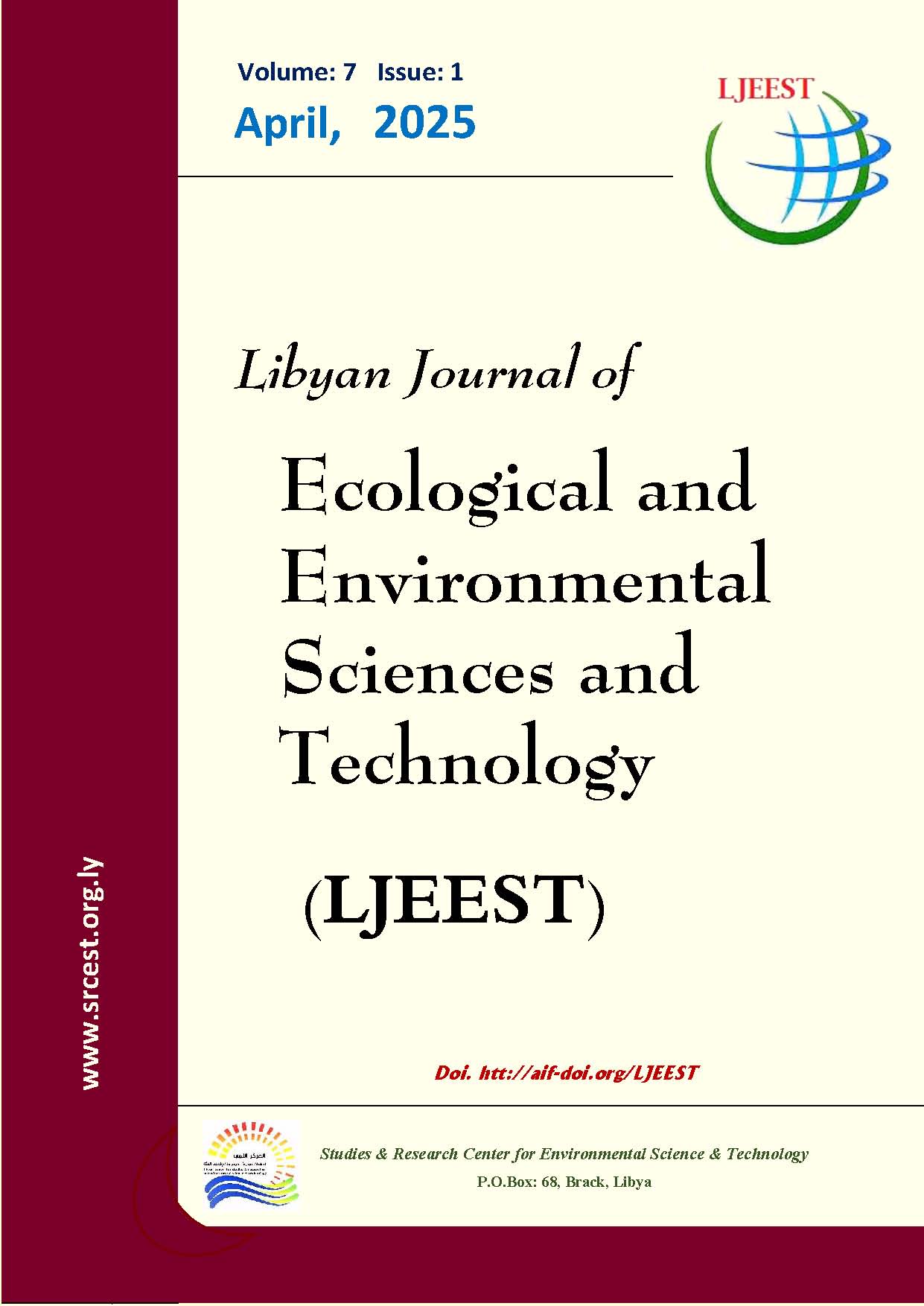Geological and Paleontological Evidences for Biological Evolution; An Overview
DOI:
https://doi.org/10.63359/wc938d19Keywords:
Geological, paleontological, biological, time scale, fossils, evidences, evolution.Abstract
This study was carried out to examine the geological and paleontological evidence supporting the biological evolution of certain vertebrates and invertebrates. It also emphasises the importance of tracking the evolution process over the geologic time scale, particularly as recorded by the fossil record, as fossils are the primary source of information on the evolution of planet life. We would not be aware of extinct species like dinosaurs and trilobites without the information they offer. Furthermore, we wouldn't be able to directly determine when important biological events like the beginning of life, the formation of shells or skeletons, the colonisation of the land, the emergence of blooming plants and animals, the creation of flight, other significant incidents occurred of extinction. But according to this study, the invertebrate fossil scallop Chesapecten changed over a period of roughly 13 million years. The presence of legs, for example, distinguishes a class of vertebrate animals known as tetrapods, such as Temnospondyls, most of which had long, narrow bodies, large, fat skulls, and relatively short legs. Since the skeletons of Archaeopteryx and Compsognathus are so similar, several Archaeopteryx specimens were initially mistakenly categorised as Compsognathus. However, they are now considered to be directly descended from reptiles. The earliest reptiles had characteristics similar to those of mammals, and skull studies reveal how the ear area and jaw articulation changed as reptiles evolved into mammals. The cephalaspids, also known as osteostracans, are the most well-known group of early jawless fishes that eventually evolved into jaw fishes. Horse evolution began with significant changes in size and morphology during the Eocene era, about 60 million years ago. The finding of hominid fossils and artifacts has accelerated during the last 20 years, and the human family tree is now considered to be much more branched and less linear than previously imagined.
References
Angielczyk, k.; kammerer, c.f.; frobisch, J., (2013) Early Evolutionary History of Synapsida. Springer Science & Business Media, new york.
Asher r. J.; geisler J. h.; sلnchez-villagra, M.R., (2008) morphology, paleontology, and placental mammal phylogeny. Systematic Biology 57: 311–317.
Behrensmeyer, A.K., (2015) The Geological Context of Human Evolution. Department of Paleobiology, Smithsonian Institution, Washington D.C. 20560.
Betancur, r.; et al., (2013) The tree of life and a new classification of bony fshes. PLoS Currents Tree of Life. 5 (edition 1).
Clarke, J.T.; Friedman, M., (2018) Body-shape diversity in Triassic: early Cretaceous neopterygian fishes: sustained holostean disparity and predominantly gradual increases in teleost phenotypic variety. Paleobiology. 44 (3): 402–433.
Daeschler, E.B., and Shubin, Neil, (1998) Fish with Fingers? Nature, v. 391, No. 6663, p.133.
Donoghue, P.C.J.; Purnell, M.A., (2009) The evolutionary emergence of vertebrates from among their spineless relatives. Evolution: Education and Outreach. 2: 204–212.
Foley, R.A. and Lewin, R., (2013) Principles of Human Evolution. Wiley-blackwell, new York. ge, D.; Wen, Z.; Xia, l.; Zhang, Z.; erbajeva, m.; huang, c.; Yang, Q., evolutionary history of lagomorphs in response to global environmental change. PLoS ONE. 8 (4): e59668.
Harris, E.E., (2015) Ancestors in Our Genome: The New Science of Human Evolution. Oxford university Press, Oxford, UK.
Hopson, J.A., (1994) “Synapsid Evolution and the Radiation of Non-Eutherian Mammals,” in Prothero, D.R., and Schoch, R.M.,(editors). Major Features of Vertebrate Evolution. Paleontological Society Short Courses in Paleontology, No. 7, pp. 190-219.
Hurry, Stephen (1993) “Introduction to Evolution,” in Skelton, Peter, (editor). Evolution: A Biological and Paleontological Approach. Wokingham, England: Addison-Wesley Publishing Co. in association with the Open University. pp. 1-23.
Janis, c., gunnell, g.F.; uhen, M.D. (2008) Evolution of Tertiary Mammals of North America, Vol II: Small Mammals, Xenarthrans, and Marine Mammals. Cambridge university Press, Cambridge.
John Pojcta, Jr. and Dale A. Springer (2020) Evolution and the Fossil Record. American Geological Institute. The paleontological Society.
Liu, J.; rubidge, B.; li, J., (2009) new basal synapsid supports laurasian origin for therapsids. Acta Palaeontologica Polonica. 54 (3): 393–400.
Long, J.A., (2010) The Rise of Fishes (2nd ed.). John Hopkins University Press, Baltimore.
Ostrom, John H., (1975) The Origin of Birds. Annual Review of Earth and Planetary Sciences, v. 3, pp.55-77.
Ostrom, John H., (1994a) “On the Origin of Birds,” in Prothero, D.R., and Schoch, R.M.,(editors). Major Features of Vertebrate Evolution. Paleontological Society Short Courses in Paleontology, No. 7, pp. 160-177.
Ostrom, John H., (1994b) “Deinonychus, The Ultimate Killing Machine,” in Rosenberg, G.D., and Wolberg, D.L., (editors), Dino Fest. Proceedings of a Conference for the General Public: Paleontological Society Special Publications, No. 7, pp. 127-138.
Savage, R.J.G., and Long, M.R., (1986) Mammal Evolution. New York, Facts on File Publications, 259p.
Taylor and Francis (2022) Vertebrate Evolution From Origins to Dinosaurs and Beyond. Taylor & Francis Group, LLC.
William L. Kruczynski and Pamela J. Fletcher (2019) Geographic Setting and Impacts to the Environment. Geological time with major evolutionary events in the fossil record.
Downloads
Published
Issue
Section
License
Copyright (c) 2025 Libyan Journal of Ecological & Environmental Sciences and Technology

This work is licensed under a Creative Commons Attribution-NonCommercial 4.0 International License.














